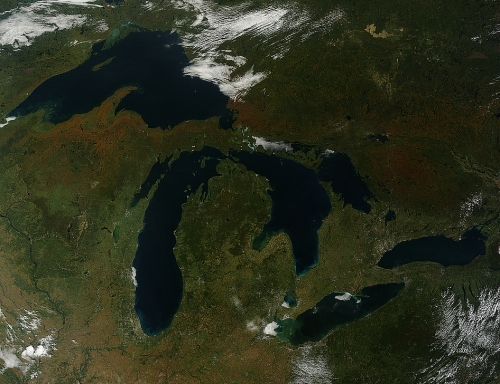
(Photo Credit: Jeff Schmaltz/NASA GSFC)
A few days after the calendar officially announced that autumn had arrived in the Northern Hemisphere, the Moderate Resolution Imagingi Spectroradiometer (MODIS) on NASA’s Terra satellite captured this view of fall colours around the Great Lakes as the season made a visible impact on the North American landscape.
Since temperatures tend to drop sooner and sunlight fades faster at higher latitudes, the progression of fall colour changes tend to move from north to south across North America from mid-September through mid-November.
In late summer and early autumn, tree and plant leaves begin producing less chlorophyll – a green pigment that harvests sunlight for plants to convert water and carbon dioxide into sugars. This process allows other chemical compounds in the leaves—particularly carotenoids and flavonoids—to emerge.
These compounds do not decay as fast as chlorophyll, so they shine through in yellow, orange, and red hues as the green fades. Some species feature deep purple and red colours in their leaves due to a different set of chemicals known as anthocyanins which are associated with the storage of sugars.
You can view the image in better detail here.